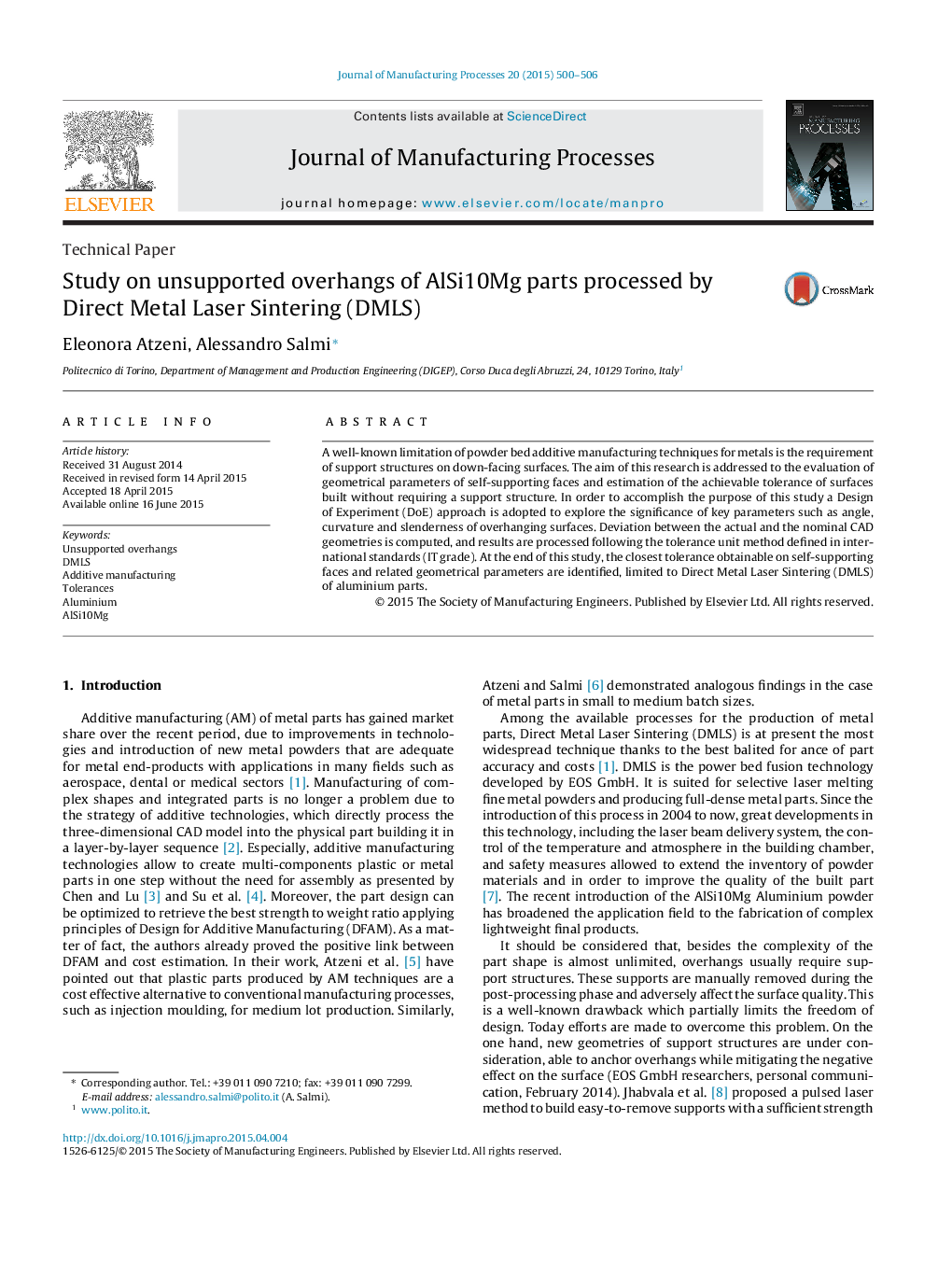| Article ID | Journal | Published Year | Pages | File Type |
|---|---|---|---|---|
| 1696886 | Journal of Manufacturing Processes | 2015 | 7 Pages |
•Geometrical parameters that define an overhang are analyzed with a DoE approach.•α angle, overhang ratio (b/Δx) and curvature (1/R) are significant factors.•A convex surface should be preferred for a large angle.•A concave surface is the good choice for a small angle.•Small overhang ratios lead to better results in terms of tolerance.
A well-known limitation of powder bed additive manufacturing techniques for metals is the requirement of support structures on down-facing surfaces. The aim of this research is addressed to the evaluation of geometrical parameters of self-supporting faces and estimation of the achievable tolerance of surfaces built without requiring a support structure. In order to accomplish the purpose of this study a Design of Experiment (DoE) approach is adopted to explore the significance of key parameters such as angle, curvature and slenderness of overhanging surfaces. Deviation between the actual and the nominal CAD geometries is computed, and results are processed following the tolerance unit method defined in international standards (IT grade). At the end of this study, the closest tolerance obtainable on self-supporting faces and related geometrical parameters are identified, limited to Direct Metal Laser Sintering (DMLS) of aluminium parts.
